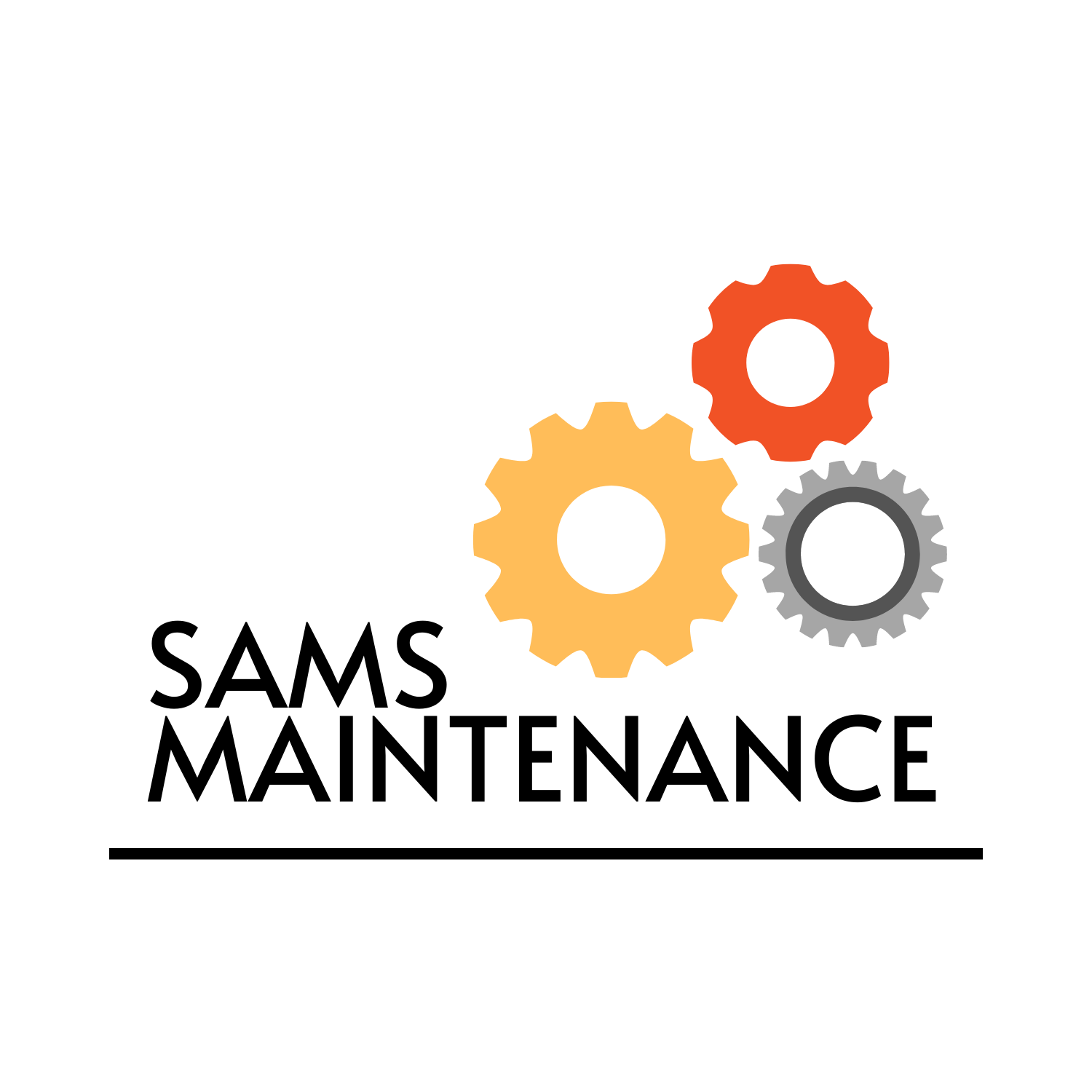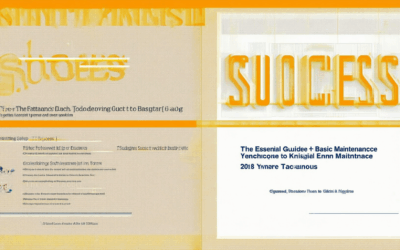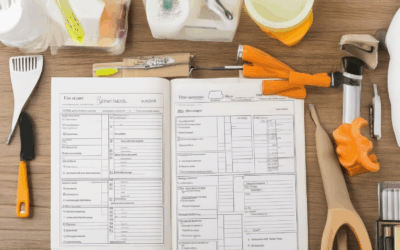Maintaining a home can feel like a never-ending to-do list, with tasks piling up faster than you can tackle them. From minor repairs to seasonal checks, keeping everything in order seems daunting. But imagine having a clear, organized plan that streamlines your efforts, preventing small issues from escalating into bigger problems. That’s where a well-crafted **home maintenance schedule** comes into play. By creating a personalized checklist, you can stay on top of everything, save time, and protect your investment. Whether it’s a weekly cleaning routine, monthly inspections, or annual tasks, a structured approach ensures your home runs smoothly year-round. In this guide, we’ll walk you through everything you need to know to develop a **home maintenance schedule** that works for you, helping you maintain your property in peak condition with ease.

What is the 1% Rule for Home Maintenance?
The 1% rule for home maintenance is a simple yet effective strategy to ensure your property stays in great shape. Here’s how it works:
- Set Aside 1% Annually: Start by calculating 1% of your home’s purchase price. This amount should be reserved yearly for maintenance expenses.
- Regular Inspections: Schedule regular check-ups for systems like HVAC, plumbing, and roofing to catch issues early.
- Budget for Repairs: Allocate funds for unexpected repairs, such as fixing a leaky roof or replacing an appliance.
- Monitor Renovations: If you’re planning renovations, set aside 20% of the budget for unforeseen challenges or changes.
Why does this rule matter? Proper maintenance prevents small issues from becoming big problems, saving you money in the long run. By staying proactive, you can enjoy a comfortable and safe living environment without unexpected surprises.
To make this process easier, visit our maintenance resources for expert tips and tools to keep your home in top shape. Remember, a little preparation goes a long way in preserving your investment!
Looking for more options? Check out our recommended home maintenance services and DIY guides for additional insights.
Creating a Simple Home Maintenance Schedule
To maintain your home in great shape, establishing a consistent routine is key. Here’s a step-by-step guide to crafting a simple yet effective home maintenance schedule:
- Monthly Tasks
- HVAC System Check: Ensure vents and ducts are clean and functional. Replace or clean filters as needed.
- Plumbing Inspection: Flush toilets, check for leaks under sinks, and inspect pipe connections.
- Water Heater Check: Test pressure relief valve and ensure the pilot light is on.
- Appliance Care: Inspect dishwasher and washer hoses for cracks. Replace fridge and freezer door gaskets when necessary.
- Exterior Maintenance: Look for missing shingles, clear gutters, and check chimney condition. Touch up peeling paint where needed.
- Indoor Systems: Clean grout lines and seal them. Inspect hard floors for wear and tear. Test electrical outlets and GFCI circuits.
- Fire Safety: Check smoke detectors and CO detectors. Ensure fire extinguishers are charged and within expiration dates.
- Yard Care: Dethatch lawn, fertilize, and seed as needed. Trim trees and shrubs, and tidy up garden tools.
- Safety Checks: Verify window and door locks. Keep emergency contact numbers handy.
- Quarterly Tasks
- Foundation Check: Inspect for cracks or movement.
- Power Washing: Clean decks, siding, and walkways.
- Water Heater Pressure Test: Ensure pressure is set correctly and test sump pump functionality.
- Chimney Sweep: Clear obstructions and check for damage.
- Seasonal Adjustments
- Winter Preparation: Insulate windows, check pipes for freezing, and store outdoor furniture indoors.
- Spring Cleaning: Clear gutters, inspect roof for damage, and prune trees/shrubs.
- Summer Readiness: Test AC unit performance and organize outdoor equipment.
- Fall Preparation: Rake leaves, check furnace operation, and prepare for winter storage.
- Annual Tasks
- HVAC Tune-Up: Schedule professional service to ensure optimal performance.
- Duct Cleaning: Remove dust and allergens from air ducts.
- Water Heater Inspection: Professional check for leaks and corrosion.
- Chimney Sweep: Ensure flues are clear and structurally sound.
- Termite Inspection: Check for signs of infestation and treat if necessary.
By following this structured plan, you can maintain your home in excellent condition year-round. Prioritize tasks based on the season and use a household calendar to stay organized. This proactive approach will save you time and money in the long run by preventing minor issues from becoming major problems.

Most Overlooked Home Maintenance Tasks
Keeping your home in great shape requires consistent effort and attention. While some tasks are obvious, others often get neglected, leading to bigger issues down the line. Here are some essential home maintenance tasks that are easy to overlook:
- Gutter Cleaning and Repair : Gutters are crucial for directing rainwater away from your home. Clogged gutters can lead to water damage, mold growth, and foundation issues. Clean them regularly and fix any leaks or sagging sections.
- Chimney Inspection : Creosote buildup in chimneys can cause dangerous fires. Have your chimney inspected and cleaned annually, especially if you use it frequently.
- Attic Insulation Check : Proper insulation keeps your home energy-efficient and comfortable. Inspect your attic for gaps, missing insulation, or pests that could be causing damage.
- Flooring Maintenance : Hard floors like wood or tile can sustain scratches or moisture damage over time. Regularly clean and inspect for wear, and consider refinishing or replacing if necessary.
- Appliance Safety Checks : Appliances like refrigerators, ovens, and HVAC systems are vital to daily life. Schedule regular inspections to ensure they’re functioning safely and efficiently.
- Drain Cleaning : Slow drains can signal clogs in pipes, which can lead to costly repairs. Use drain cleaning tools or chemicals to prevent backups and blockages.
- Landscaping and Tree Care : Overgrown grass, weeds, or dead trees can indicate neglect. Regularly mow, trim, and check for signs of disease or pests in your yard and plants.
- Smoke Detector and Fire Alarm Testing : These devices are your first line of defense against fire threats. Test smoke detectors monthly and replace old batteries to ensure they’re working properly.
- Grout and Caulking Repair : Grout and caulking in bathrooms and kitchens can crack or become discolored. Replacing or repainting grout and sealing cracks helps maintain a fresh look and prevents water damage.
To ensure your home stays in top shape, consider scheduling regular maintenance checks or hiring professionals for tasks like chimney inspection or appliance servicing. Taking these steps can save you time and money in the long run.
For more expert tips and resources, visit our home maintenance guide to learn how to tackle these tasks effectively.

What Routine Maintenance Is Required for a House?
To keep your house in optimal shape, regular maintenance is essential. Here’s a detailed guide to the routine tasks you should perform:
- Exterior Maintenance:
- Cleaning and checking gutters and downspouts twice a year.
- Inspecting and repairing siding, windows, and doors for cracks or damage.
- Trimming trees and bushes to prevent branches from touching the roof or walls.
- Checking the foundation for signs of movement or cracks.
- Testing and replacing weatherstripping around doors and windows.
- Interior Maintenance:
- Daily cleaning routines, including vacuuming, dusting, and mopping floors.
- Grooming carpets and rugs to prevent dirt buildup.
- Checking for mold or mildew in bathrooms and basements.
- Inspecting grout and tiles for cracks or discoloration.
- Systems Maintenance:
- Scheduled HVAC service to ensure proper heating and cooling.
- Monthly air filter replacement for optimal airflow.
- Water heater checks to prevent leaks or inefficiencies.
- Testing smoke detectors and carbon monoxide alarms annually.
- Appliance Care:
- Frequent cleaning of ovens, microwaves, and refrigerators.
- Checking for leaks under sinks and appliances.
- Scheduling professional services for major appliance repairs.
- Safety Checks:
- Inspection of electrical outlets and switches for issues.
- Testing fire extinguishers and ensuring they’re fully charged.
- Examining chimneys and flues for obstructions or damage.
- Checking for tripping hazards like loose rugs or uneven flooring.
By staying proactive with these maintenance tasks, you can extend the life of your home and ensure it remains a safe and comfortable place to live. For more detailed guides and professional advice, visit our home maintenance resources .
What Maintenance Does a House Need Every Year?
To keep your house in great shape, it’s essential to perform regular maintenance tasks throughout the year. Here’s a comprehensive guide to ensure your home stays in prime condition:
Exterior Maintenance
- Roof Inspection: Check for missing shingles, cracks, or damage. Replace any worn-out materials as needed.
- Siding Check: Look for peeling paint, rot, or warping. Consider repainting or replacing if necessary.
- Window and Door Frames: Inspect for cracks, gaps, or rust. Ensure screens are intact and doors close properly.
- Gutter Cleaning: Remove debris and ensure they’re directing water away from your home to prevent foundation issues.
- Deck and Walkway Safety: Check for loose boards, splintered wood, or structural issues. Repair as needed to maintain safety.
- Pressure Washing: Clean exterior surfaces like siding, decks, and driveways to remove dirt and grime.
Interior Maintenance
- Flooring Check: Look for signs of wear, discoloration, or damage. Refinish or replace as necessary to maintain comfort and aesthetics.
- Wall and Ceiling Inspections: Check for cracks, peeling paint, or water stains. Address issues promptly to prevent further damage.
- Plumbing System: Examine pipes under sinks, bathtubs, and laundry areas for leaks or corrosion. Fix any issues immediately to prevent costly repairs.
- Appliance Maintenance: Clean vent pipes for dryers, check the water heater for leaks, and ensure all major appliances are functioning properly.
- Smoke Detectors and Carbon Monoxide Levels: Test smoke detectors monthly and ensure CO levels are safe. Replace batteries as needed.
Heating, Ventilation, and Air Conditioning (HVAC)
- HVAC Servicing: Schedule a professional to clean, service, and inspect your furnace, boiler, or air conditioning unit to ensure optimal performance and energy efficiency.
- Filter Changes: Replace or clean air filters regularly to maintain airflow and efficiency.
- Ductwork Check: Inspect ducts for leaks, dirt, or blockages. Clean if necessary to improve indoor air quality.
Plumbing and Water Systems
- Water Heater Check: Inspect for leaks or corrosion. Consider replacing older models to reduce energy costs and prevent issues.
- Drainage Systems: Ensure gutters and pipes are clear to prevent clogs and water damage. Consider using drain cleaner if needed.
- Hot Water Heater Pressure Test: Check the relief valve to ensure it functions properly and adjust pressure as recommended by the manufacturer.
Electrical Systems
- Outlet and Switch Inspections: Check for tripped breakers or flickering lights. Test GFCI outlets to ensure they’re working correctly.
- Lighting and Switches: Replace outdated bulbs and ensure switches are functioning smoothly.
- Ground Fault Circuit Breaker Testing: Verify that GFCI circuits are protecting your home from electrical hazards.
Landscaping and Yard Care
- Tree and Bush Trimming: Keep tree branches and shrubs trimmed to prevent damage to your roof or power lines.
- Lawn Maintenance: Mow, edge, and fertilize your lawn to keep it healthy and visually appealing.
- Sprinkler System Check: Ensure sprinklers are functioning properly and adjust timers to avoid water waste.
- Leaf and Debris Removal: Clean up leaves and debris from yards, gardens, and walkways to maintain a tidy appearance.
Additional Tips
- Professional Home Inspection: Hire a professional inspector to identify potential issues before they become costly problems.
- Home Maintenance Checklist: Create a personalized checklist to track all tasks throughout the year.
- Stay Updated on Local Codes: Familiarize yourself with local building codes and update your home to meet current standards.
By following this annual maintenance checklist, you’ll ensure your home remains in excellent condition, reducing the need for costly repairs and extending its lifespan. Remember to work at a comfortable pace and take breaks as needed to avoid burnout.
For more detailed guidance, visit our Lowes Home Improvement Guide for professional tips and resources.

Recommended Maintenance Schedule
We recommend following a routine maintenance schedule tailored to your vehicle’s needs. This ensures optimal performance and longevity of your car, truck, or SUV. Below is a detailed breakdown of the suggested maintenance tasks:
- Oil Changes : Regularly change your engine oil every 3,000 to 5,000 miles, depending on your vehicle’s requirements. This helps maintain engine health and prevents excessive wear.
- Tire Rotations : Rotate your tires every 6,000 to 12,000 miles to ensure even wear and maximize tread life. This is typically paired with a wheel alignment check every 6,000 miles or as needed.
- Brake System Inspections : Inspect your brakes every 6,000 miles or sooner if you notice any warning signs like squeaking or reduced responsiveness. Replace worn brake pads and rotors as needed.
- Filter Replacements : Replace cabin and engine air filters every 12,000 miles or as specified in your owner’s manual. Clean or replace fuel filters annually, depending on usage.
- Fluid Checks : Regularly inspect coolant, transmission fluid, and differential fluid levels. Top off fluids as needed and replace old or degraded fluids according to your vehicle’s specifications.
- Belts and Hoses : Check and replace worn belts (drive, serpentine, and tensioner) every 3,000 miles or as needed. Inspect hoses for cracks, splits, or leaks and replace them if necessary.
- Exhaust System : Inspect the exhaust system for leaks or damage every 2,000 miles. Ensure catalytic converters are functioning properly and replace them if they fail.
- Spark Plugs : Replace spark plugs every 3,000 miles or as specified by your vehicle’s manufacturer. Ensure they are gapped correctly for optimal ignition performance.
- Electrical Systems : Test battery terminals for corrosion and ensure the battery is charged properly. Replace aged batteries when recommended by your vehicle’s maintenance schedule.
In addition to these routine tasks, consider scheduling a comprehensive inspection at least once a year or before major trips. This can help catch potential issues early and ensure everything is in optimal working condition. For more detailed guidance or specific recommendations for your vehicle, visit our maintenance schedule page .
Conclusion: Regular maintenance is crucial for maintaining the reliability and performance of your vehicle. By adhering to this schedule, you can prevent costly repairs and extend the life of your car. Always refer to your vehicle’s owner’s manual for precise intervals and requirements.




0 Comments